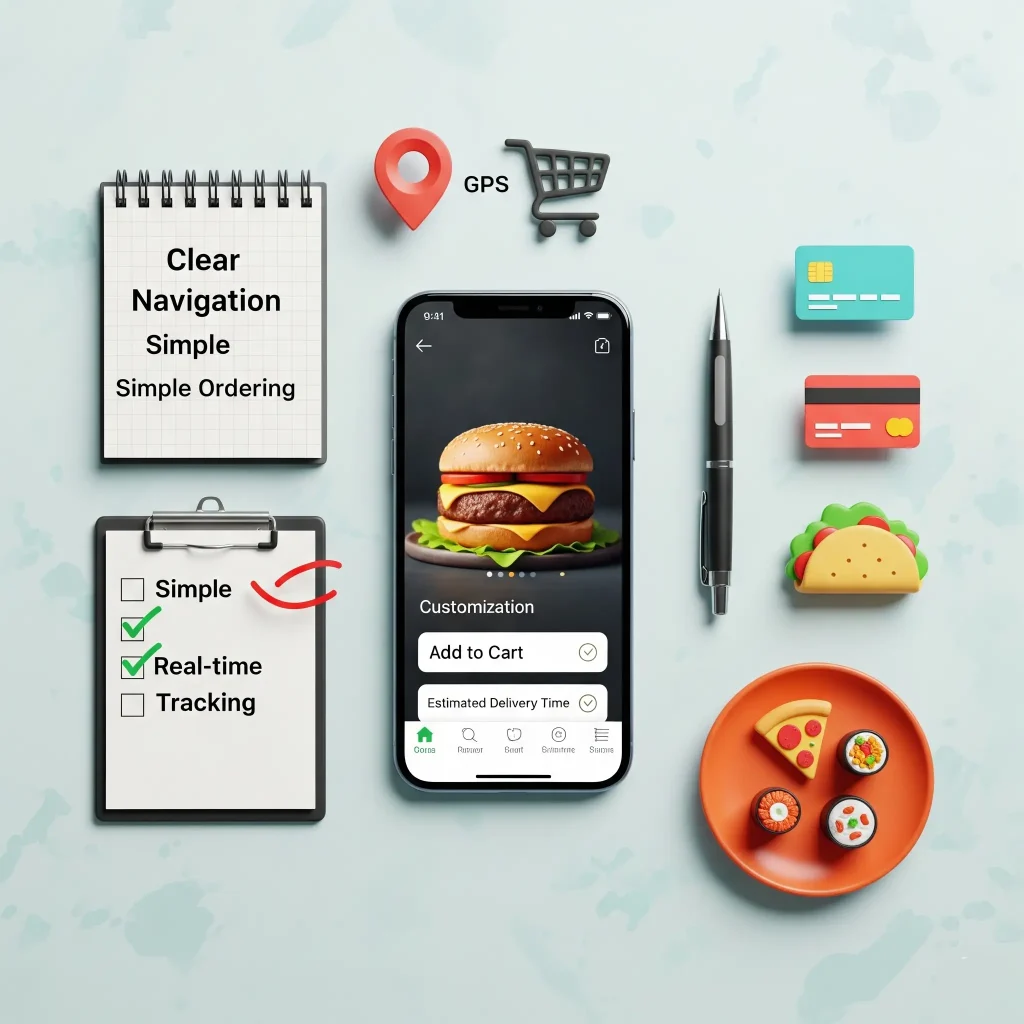
Introduction:
Food delivery apps have really become essential in our everyday lives, making it super easy to order meals with just a few taps. While the convenience is a big draw for users, the true test of an app’s success is how user-friendly food delivery app design is implemented.
Features like easy navigation, quick checkout, order tracking, and personalized options are key to keeping customers coming back in such a competitive market.
For new businesses, creating something like an UberEats clone offers a solid foundation while still allowing for tweaks to meet today’s demands. In this blog, we’ll dive into the best practices for developing user-friendly food delivery apps and share strategies to help your app shine in the crowd.
1. Important User Interface Components:
A clean, well-structured design and easy to access User Interface (UI) allows user navigation much smoother. The best practice to design a user-friendly food delivery app is by developing it with a simple layout which has minimal icons and elements, maintaining consistency in colour, font and Button style. Using High quality images for the food and dishes will make it more appealing visually.
Search and Discovery:
It should have intelligent search with filtration for types of cuisines, price, delivery time, and ratings. Feature most popular options on the interface, remembering the users’ likes to fasten ordering later.
Restaurant Listings:
Dish items must be described very clear, good images, match the current prices up to date, along with the information on delivery time, minimum order, and special delivery offers.
Customization of Orders:
Options to modify meals within scope, add extras, and put in special instructions for easy meals. Very complete customization of orders with a very simple immediate delivery application.
2. Customer Experience Features:
Real-Time tracking:
Advanced tracking order execution with real-time updates on delivery estimates and active driver tracking. Proactive notification on order status and detected delays should be included in the system.
Financing:
Checkout should be seamless and should involve multiple options for payment together with saved payment methods and an easy overview of the order. Secure and refunded transaction handling is part of what the online delivery software must offer.
Ratings and Reviews:
Create a simple feedback mechanism for the restaurants and delivery services. Incorporate the options of completing these evaluations with the things they have taken pictures of and any particular aspects of the service experience.
3. The Module for Partner Referrals with Restaurants:
Menu Management: Delivering simple methods to modify exploring menus, changing respective prices and availability. An integrated ubereats clone app for restaurants supports bulk updates of items. It also deactivates items for a temporary period.
Process Order: Automate order acceptance, updates preparation times and deals with the delivery, including managing more than one order during peak hours.
Analytics Dashboard: Providing deep insights about sales performance, customer feedback, and operational metrics, enabling restaurants to optimize their services better with data-driven decision-making.
4. Features Deliver Partner:
Route Optimization: Intelligent routing algorithms that consider traffic and weather conditions and permit multiple discharges will be embodied in ZyberDelivery to manage more efficiently the delivery and satisfaction of drivers.
Earnings Tracking: Clarity on what has been earned through incentives and bonuses opportunities, real-time payment updates, and performance metrics.
Support System: Quick access to customer service, navigation assistance, or aid regarding orders; potentially with additional help services for unforeseen occurrences.
5. Technical Considerations:
App Performance: Fast load times, smooth transitions, and minimum battery consumption. UberEats clone script has provisions for peak loads without compromising performance.
Offline Functionality: Implement core features that work offline. History of ordered items, addresses saved, and basic viewing of menus should be included.
Platform Compatibility: Uniform experience across devices and operating systems. The UberEats clone must adapt to different sizes of screens and functionalities of devices.
6. Security & Safety:
Data security: Carry out strict safety measures on the personal as well as payment details. Regular
Security Audits: Advertisements and compliant have to put up with the regulations of data protection.
No-touch Alternatives: Provide no-touch delivery and e-cash payments, inclusive of delivery instructions and safety preferences.
7. Additional Features:
Loyalty Programs: Creating exciting reward point systems, discounts and special offers. Personalized promotions based on ordering patterns should also be included.
Multi-language Support: interface in multiple languages accurately translations; and cultural consideration in design and content too.
Conclusion:
Creating a truly user-friendly food delivery app takes a lot of thought and care across various elements of the user experience. From smooth navigation and straightforward ordering to high quality visuals and dependable performance, everything matters.
A well designed app not only draws in and keeps customers but also promotes trust and efficiency for restaurants and delivery partners, making the platform more appealing and sustainable in a competitive landscape.
